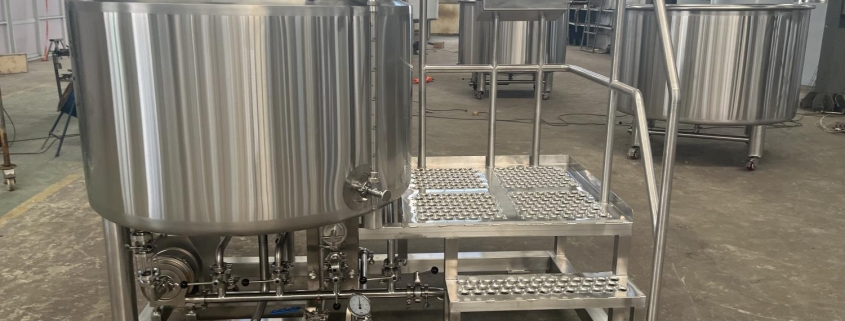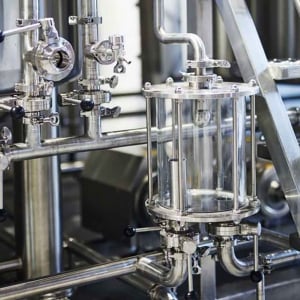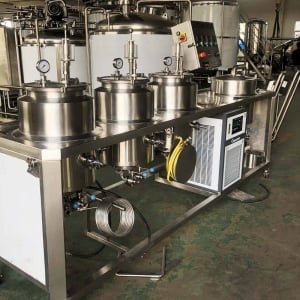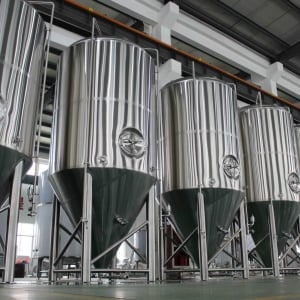Stainless Steel Brewing Equipment
Brewing your own beer is both an art and a science, and like any craft, the right tools make all the difference. Whether you’re a homebrewer looking to upgrade your setup or a commercial brewer planning a full-scale operation, stainless steel brewing equipment is the gold standard for modern brewing. This article will walk you through everything you need to know, from an overview of stainless steel’s advantages to installation, maintenance, and more.
Overview of Stainless Steel Brewing Equipment
When it comes to brewing beer, stainless steel equipment is considered the best for several reasons. Stainless steel is durable, resistant to corrosion, and easy to clean—all essential traits when working with the caustic chemicals, high temperatures, and general wear that comes with brewing. But there’s more to consider than just the material itself.
Brewing systems can range from small home setups to industrial-grade equipment, each with different price ranges, capacities, and features. Whether you’re just starting out or managing a full-scale brewery, understanding the right equipment for your needs is key to success.
Key Benefits of Stainless Steel for Brewing
- Durability: Resistant to rust and corrosion, ensuring longevity.
- Hygiene: Non-porous, making it easy to clean and maintain.
- Temperature Tolerance: Handles high temperatures without degrading.
- Taste Preservation: Doesn’t leach flavors into the beer.
- Aesthetic Appeal: A sleek, modern look that elevates the appearance of any brewing space.
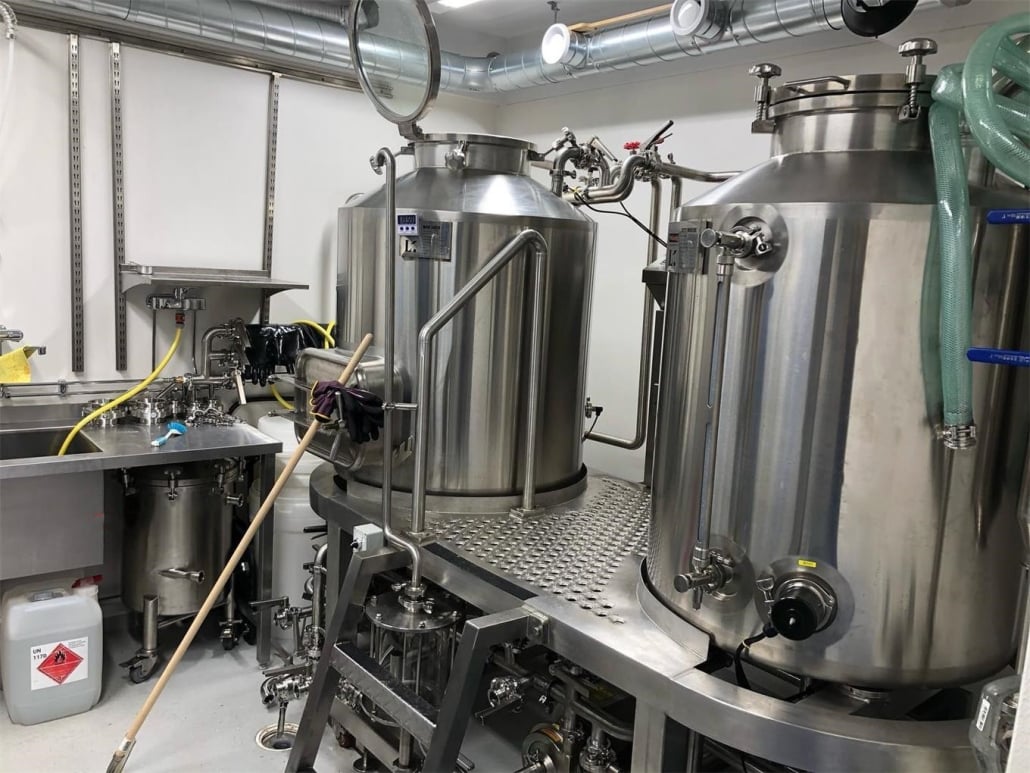
A Guide to Stainless Steel Brewing Equipment
There’s a broad range of equipment involved in brewing beer, each with specific functions. Let’s break down the types of equipment used in stainless steel brewing systems and their roles in the process.
Essential Brewing Equipment Types
| Equipment | Function | Features |
|---|---|---|
| Mash Tun | Where grains are mashed to extract sugars for fermentation. | Insulated for temperature control; sometimes includes stirring mechanisms. |
| Brew Kettle | Used to boil the wort, typically equipped with heating elements. | Stainless steel construction for durability and even heat distribution. |
| Fermenters | Vessels where yeast is added to the wort for fermentation. | Includes airlocks and temperature controls for optimal yeast performance. |
| Heat Exchangers | Cools the wort down quickly after the boil, preparing it for fermentation. | Copper or stainless steel designs, providing rapid cooling. |
| Bright Tank | A storage tank for clarifying and carbonating the beer. | Often pressurized, stainless steel for easy cleaning. |
| Pumps | Used to move wort or water through the system during brewing. | Stainless steel casing, typically food-grade. |
| Cleaning Systems (CIP) | Specialized systems used to clean and sanitize brewing equipment automatically. | Made of stainless steel for long-term corrosion resistance. |
Each piece of equipment plays a critical role in the brewing process, from mashing grains to fermenting beer, and stainless steel ensures they remain functional and clean throughout numerous batches.
Brewing Process Using Stainless Steel Equipment
Brewing is a complex process that involves several stages, and each stage benefits from stainless steel’s properties. Here’s a breakdown of the brewing process using stainless steel equipment:
Step-by-Step Brewing Process
- Mashing
The first step is to mash the grains in a stainless steel mash tun. Here, water is mixed with the grains to convert starches into fermentable sugars. The tun’s stainless steel construction helps maintain a steady temperature throughout the process, which is crucial for optimal sugar extraction. - Boiling
After mashing, the wort (sugar water) is transferred to a stainless steel brew kettle, where it is boiled. This is where hops are added, and the boiling process helps sterilize the wort and bring out the flavors from the hops. Stainless steel kettles distribute heat evenly, ensuring the wort is boiled efficiently without burning. - Cooling
After the boil, the wort needs to be quickly cooled down before fermentation begins. Heat exchangers, often made from stainless steel, are used for this purpose. They lower the temperature of the wort quickly, preventing contamination and helping the yeast ferment properly. - Fermentation
Once the wort is cool, it’s transferred to a stainless steel fermenter. This is where yeast is added, and the magic happens. Fermentation tanks made from stainless steel are ideal because they can be tightly sealed to keep out contaminants while allowing for precise temperature control. - Storage and Carbonation
After fermentation, the beer is transferred to a bright tank for carbonation and storage. Bright tanks are typically made from stainless steel to withstand high pressure, allowing for consistent carbonation and easy cleaning between batches.
Capacity, Spaces, Design, and Customization of Stainless Steel Brewing Equipment
The size and design of your brewing system depend heavily on your production needs, available space, and whether you need a customized setup. Here’s a detailed breakdown:
| Aspect | Details |
|---|---|
| Capacity | Ranges from small 5-gallon homebrew setups to industrial-scale systems producing hundreds of barrels. |
| Space Requirements | Compact homebrew systems can fit in a garage, while large-scale breweries require significant space. |
| Design | Standard designs focus on efficiency, but customized designs can optimize for unique brewing processes. |
| Customization Options | Ability to add extra features like automated stirring, temperature controls, or advanced monitoring systems. |
Customization vs. Standard Systems
When choosing between standard and customized stainless steel brewing systems, it all comes down to your brewing goals. Smaller setups often stick to off-the-shelf options, which are less expensive and easy to maintain. Larger, more advanced operations may require custom systems to meet unique production requirements.
Suppliers and Price Range for Stainless Steel Brewing Equipment
The price of stainless steel brewing equipment varies significantly depending on size, features, and brand. Here’s a general overview:
| Supplier | Price Range (USD) | Typical Equipment |
|---|---|---|
| Spike Brewing | $1,000 – $10,000 | Homebrewing kits and smaller commercial systems. |
| Ss Brewtech | $500 – $7,000 | Home and small commercial equipment. |
| Blichmann Engineering | $300 – $15,000 | Homebrewing and mid-range commercial systems. |
| Brewmation | $15,000 – $500,000 | Large-scale commercial brewing systems. |
| Ziemann Holvrieka | $50,000 – $1,000,000+ | Industrial-scale brewing systems for large breweries. |
Installation, Operation, and Maintenance of Stainless Steel Brewing Equipment
Installing, operating, and maintaining stainless steel brewing equipment can vary based on the complexity of your setup. Here’s what you need to know:
| Aspect | Details |
|---|---|
| Installation | Depending on the system, you may require professional installation, especially for larger or more complex setups. Some smaller systems can be assembled by homebrewers. |
| Operation | Operating stainless steel brewing equipment involves temperature control, pressure monitoring, and ensuring that all processes—like mashing and boiling—are executed correctly. |
| Maintenance | Stainless steel is low maintenance, but it still requires regular cleaning with specialized CIP (clean-in-place) systems to avoid contamination and buildup. Fermenters, tanks, and pipes need thorough cleaning between uses. |
Regular maintenance will extend the lifespan of your equipment and ensure consistent brew quality.
How to Choose a Stainless Steel Brewing Equipment Supplier
Choosing the right supplier for your brewing equipment can have a huge impact on your brewing operation. Here’s a guide to what you should look for:
| Factor | Details |
|---|---|
| Reputation | Look for suppliers with strong reputations, positive reviews, and proven track records. |
| Customer Service | Ensure they offer good customer support for installation, troubleshooting, and maintenance. |
| Customization Options | If you need custom equipment, look for suppliers who offer custom designs tailored to your brewery’s specific needs. |
| Warranty | Look for suppliers who offer comprehensive warranties on their equipment. |
| Cost | Compare costs between suppliers to ensure you’re getting the best value for your investment. |
When choosing a supplier, don’t just look at the price. Consider long-term factors like durability, customer support, and customization options.
Comparing Advantages and Limitations of Stainless Steel Brewing Equipment
| Advantage | Limitation |
|---|---|
| Durable and Long-lasting | More expensive upfront compared to some other materials (e.g., plastic, aluminum). |
| Easy to Clean | Heavier than alternative materials, making transport and setup more difficult. |
| Temperature Resistant | Requires specific cleaning agents to maintain quality over time. |
| Aesthetic Appeal | Potential for scratches or dents, though less common. |
| Corrosion Resistant | Higher price may be a barrier for smaller operations or homebrewers on a tight budget. |
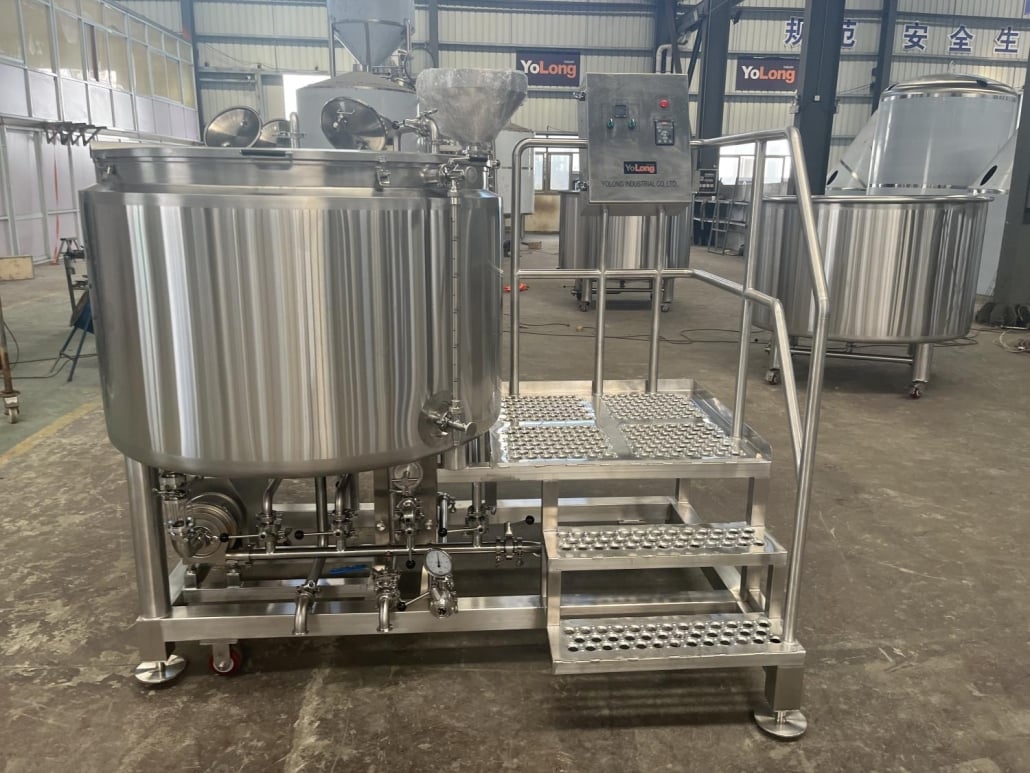
FAQ
Here are some common questions and answers about stainless steel brewing equipment:
| Question | Answer |
|---|---|
| Is stainless steel really better than aluminum for brewing? | Yes, stainless steel is more durable, resistant to rust, and doesn’t affect the flavor of the beer. |
| Can I use stainless steel equipment for both beer and cider? | Yes, stainless steel is versatile and can be used for multiple types of fermentation. |
| How do I clean stainless steel brewing equipment? | Use a specialized CIP system or manually clean with food-grade detergents and sanitizers. |
| Is stainless steel equipment worth the cost for homebrewers? | If you’re serious about brewing long-term, stainless steel is worth the investment for its durability and quality. |
| Can I upgrade individual parts of my system later? | Yes, stainless steel systems are highly modular, so you can upgrade parts like fermenters or kettles over time. |
Conclusion
Stainless steel brewing equipment is an investment in quality, durability, and consistent results. Whether you’re brewing at home or running a commercial brewery, stainless steel ensures that your system can handle the rigorous demands of brewing while producing excellent beer. The initial cost may be higher, but the long-term benefits—including ease of cleaning, resistance to corrosion, and maintaining the purity of your brew—make it the go-to choice for serious brewers.

